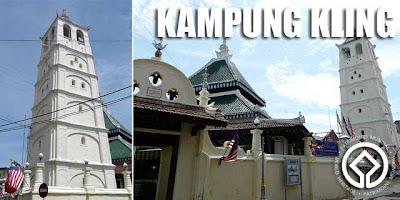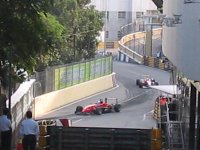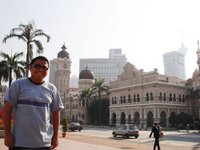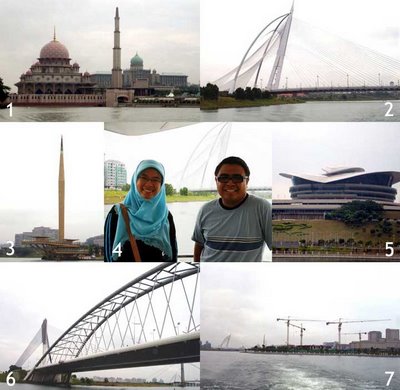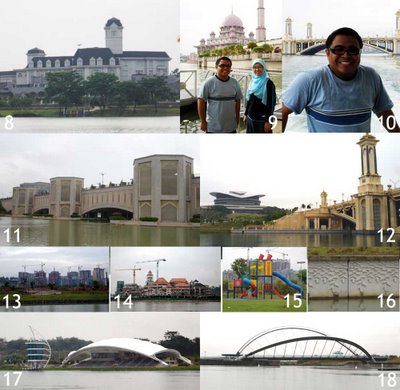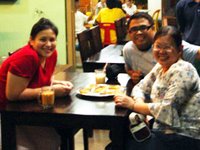So what is with this roll call of Philippine tourism destination when the summer break is already over with tons of academic requirements just waiting around the corner? More than just offering a vacation option, each of these destinations showcases a unique aspect of Philippine culture. The heritage houses such as those in Vigan, Taal and San Juan in Batangas, Sariaya and Silay, the ornate baroque churches of Bohol and other provinces across the country, the unique upland culture of the Cordilleras, and the rich and colorful Muslim way of life down south in Mindanao, all have their own vital contributions to the endangered fabric known as the Filipino identity.
What is Filipino then? What is being Filipino? Are you proud to be Filipino? These are apt self-reflections that are most relevant at this juncture as the Filipino nation remembers the assertion of its freedom. Indeed, these are fundamental questions Juan de la Cruz must answer if he is to progress as a nation.
The identity of any nation is always dictated by its culture, the way of life its society adheres to. Specifically, it is a system of shared beliefs, values, customs, behaviors, and artifacts that fuse a society together. This system is what members of society utilize to cope with everyday life.
That however is just one definition of culture. American anthropologists, Alfred Kroeber and Clyde Kluckhohn, published a list of 160 different definitions of culture in 1952, indicative of the diversity of the anthropological concept of culture. John H. Bodley, Chair of the Department of Anthropology at Washington State University summarized their list under eight general definitions namely: topical (culture consists of everything on a list of topics, or categories, such as social organization, religion, or economy), historical (culture is social heritage, or tradition, that is passed on to future generations), behavioral (culture is shared, learned human behavior, a way of life), normative (culture is ideals, values, or rules for living), functional (culture is the way humans solve problems of adapting to the environment or living together), mental (culture is a complex of ideas, or learned habits, that inhibit impulses and distinguish people from animals), structural (culture consists of patterned and interelated ideas, symbols, or behaviors) and symbolic (culture is based on arbitrarily assigned meanings that are shared by a society).
Bodley mentions that a minimum of three components are needed to form what we call culture. These are “what people think, what they do, and the material products they produce.” He adds that “culture also has several properties: it is shared, learned, symbolic, transmitted cross-generationally, adaptive, and integrated.”
Despite the broad coverage of cultural definitions, focus will be on culture as social heritage. In particular, concentration is on tangible cultural properties that transcend generations and their inherent potential to become symbolic and serve as fervent unifying symbols that would guide the Filipino nation in its search for an enduring national identity.
In her book A Cultural Worker’s First Manual, Felice P. Sta. Maria defines cultural heritage as “the totality of cultural properties preserved and developed over time and passed on for posterity. A people’s cultural heritage is their national memory.”
A cultural property, according to Sta. Maria, includes all forms of human creativity by which a nation can reveal its identity. Tangible ones form the physical expression of the national memory or the cultural heritage. Among these material symbols mentioned by Sta. Maria are historic sites and structures such as the numerous baroque churches, mosques, and elaborate ancestral houses, as well as buildings and groups of architectural and engineering works that include gardens, plazas, parks, forts and fortifications and historical ruins.
An old formula
One part of our Philippine cultural heritage, albeit intangible, are proverbs which are commonly called salawikain. In fact, one is so overused, it has become cliché: “Ang hindi marunong lumingon sa pinanggalingan ay hindi makakarating sa paroroonan.” But despite the repeated mention of these lines, do Filipinos actually listen to the wisdom the lines try to impart?
It must be stressed over and over again, to such a stubborn Filipino nation which places foreign cultures on pedestals higher than its own, that it will not progress as a nation if the development is superficial. If Juan de la Cruz embraces urbanization and modernization by getting rid of what makes him or her Filipino, moving forward would be pointless. The nation may look perfect on the outside; but inside it is empty. Its soul is dead.
Architectural heritage forms a large and visible part of tangible Filipino culture and identity. However, these historical structures are constantly faced with development pressures. And as a result, they are sacrificed in the name of progress.
The country is proud for example, that Vigan is a UNESCO World Heritage site and yet the remains of a grand centuries-old seminary was demolished in the said city, replaced by fast food chains such as McDonald’s and Jollibee. It appears McDonald’s was not content when it prominently positioned their golden arches on the grounds of the Balayan Church in Batangas, one of the 26 churches declared by the National Museum in 2001 as National Cultural Treasures. The stewards of church property simply could not resist the allure of extra income.
In Banaue, one would see concrete buildings and shanties on the rice terraces instead of the traditional Ifugao houses. Another site inscribed in the UNESCO World Heritage List, the Rice Terraces of the Philippine Cordilleras (known as payo to the Ifugao) are also included in the UNESCO List of World Heritage in Danger.
The charming Pines Hotel at the top of Session Road, a remnant of Baguio City’s hill station legacy, as well as the pre-war YMCA Building beside Manila City Hall were both replaced by gargantuan SM malls that could have been placed in some other location. They not only clutter the historic skylines, but contribute as well to the traffic and pollution problems both areas are experiencing.
Imagine how many pine trees had to be cut to build that mall in Baguio City, which according to a World Bank study, was said to have the worst air quality among key Philippine cities! The deterioration of the quality of life of these areas is just too much a price to pay for the greed of a few individuals.
Built heritage resources, according to Prof. Rene Luis Mata of the UP College of Architecture, also includes what is called industrial heritage, a category which includes train stations, lighthouses, sugar and rice mills, ice plants, factories and bodegas, bridges, irrigation systems and canals. “We are unfortunately unaware of this heritage category,” says Mata, “and they are often the first to go. The technical advances of a period in our history are worth saving, too."
Indeed, if Filipinos do not learn to look back and value the past, the nation will never reach its destination. In fact, it can be noticed, more often than not, that countries which fight hard to preserve their culture and architectural heritage are those which progress more completely. Just take a look at other ASEAN countries such as Singapore, Malaysia, Thailand and even Vietnam, where in their key cities, architectural heritage is very much protected. When Vietnam and China were actively desecrating their heritage in the name of a new cultural revolution, their economies were in shambles. Today, the world is witnessing a complete turnaround.
These Asian countries may be spending millions of dollars to restore their old buildings and heritage sites but are able to cash in on their investments with millions of tourists arriving at their doorsteps annually. But more than the returns on investment, these cultures are able to strengthen their national identities. And despite the influx of tourists, they are still able to maintain the original settings and cultural landscapes that tourists flock to visit.
In the Philippines however, tourism is becoming a curse mainly because we have yet to understand why tourists come to our country in the first place. When going abroad, Filipinos look for shopping areas and malls most of the time. That is why by building shopping malls, the country in general thinks that tourists will start arriving as well. That is not at all the case! Tourists visit a country more so to experience its culture, savor the food, visit cultural and historical sites, and not to simply shop in malls!
As UNESCO puts it, “It is a well-known fact that tourism can be a deadly foe as much as a firm friend in the matter of development.” The institution adds, “Considering the economic might of the tourist industry, careful attention should be paid to this many-sided phenomenon with its global repercussions. The impact of tourism is such that progressive strategies are vitally needed in order to prepare the ground for genuinely progressive international, regional and local strategies.”
Juan de la Cruz can find his identity only when he can truly declare himself culturally independent. “A group, society or nation achieves cultural independence,” Sta. Maria writes, “when its own culture remains as secure and intact as it wishes it to be. It achieves cultural independence when its people have the strength and maturity to select what they want or need from the past, the present and the projected future.” She adds, “Every generation will have to decide how to manage change, how it will alter its culture. Everything changes. Cultural development is concerned with the quality of change people make for themselves.” And heritage conservation plays a big part in the selection of what Filipinos need from their past.
Why conserve heritage?
The National Commission for Culture and the Arts (NCCA) defines conservation as “a multi-disciplinary means of safeguarding the country's historico-cultural heritage to suitably adapt it to the needs of the society.” Specifically, heritage conservation, according to Sta. Maria, “is action taken to protect cultural resources especially those from the past.”
Heritage conservation continuously connects us to our past by keeping significant structures, historical and cultural sites and settings intact. According to the Heritage Conservation Society (HCS), a non-stock, non-profit organization advocating the protection and preservation of our architectural heritage, “our built heritage is evidence of our political history and socioeconomic development; it reflects our shared values, and is tangible proof of Filipino excellence and creativity.”
Our architectural heritage thus becomes a catalyst for a strong “pride of place” Filipinos must have within ourselves, by “arousing cultural and historical awareness, which often advances cultural tourism.” According to the group “Built heritage can be recycled for contemporary, adaptive re-use, thereby preserving the cultural charm and traditional character of our cities and towns. Heritage conservation enhances progress and modernization: from urban revitalization and community housing, to the revival of traditional crafts and the stimulation of entrepreneurial activities.”
By advocating the protection and preservation of our built heritage, cultural and historical sites and settings according to the HCS, the nation would be upholding the Philippine Constitution which states that heritage and culture should be developed and preserved for national identity.
The mission of the HCS is to “be the prime mover and advocate for the preservation of Philippine built heritage resources in order to contribute towards the establishment of a Society that preserves and values its cultural heritage through advocacy and volunteerism, project implementation, education and information.” It envisions “a Filipino society that values and preserves its cultural heritage in order to instill pride of place and strengthen Philippine national identity.”
Cultural advocacy according to Sta, Maria “is the act of calling attention to cultural concerns.” She adds that in the Philippines, cultural advocacy is in its early stages. But it is however vital for communities, local and national organizations and other concerned groups and individuals to engage in such an advocacy if the right to culture and the proper directing of support to cultural development is to be protected.
Heritage can be something ordinary
Architect Augusto F. Villalon, an HCS member who writes a regular Monday column in the Philippine Daily Inquirer, mentions that “high level of achievement does not equate to only what is grand and monumental. The ordinary and the everyday equal, and many times surpass, the grand and monumental in level of achievement.” Villalon continues, “The Rice Terraces of the Philippine Cordillera cannot be the grand monument they are recognized to be without the support of the farmers who live, plant, harvest and maintain the site. Unrecognized for being the true heroes of the rice terraces, their lives revolve around the site.
“It is their ordinary, everyday environment, taken so much for granted, that many fail to realize it is an internationally recognized UNESCO World Heritage site. For the residents, it is just their home. Like our Ifugao brothers, we are surrounded with so much of what we consider ordinary and everyday that we fail to realize their value.”
For the coming weeks, the Philippine Collegian will be featuring these places we have always considered ordinary. And there would be no better place to begin with than the architectural heritage of the UP Diliman campus. With the centennial of the University of the Philippines just around the corner, it would be most proper to revisit these sites scattered in the various campuses of the UP system, and look beyond the facades, taking a much deeper look into their history and contributions to the heritage of the entire nation.
If Juan de la Cruz is indeed to progress as a nation, he should stop being cynical about the country and put his money where his mouths is. Juan de la Cruz must cease the unnecessary and incessant complaining and start doing his or her share, tangible efforts, to uplift the standard of living of the entire Filipino nation. But before such concrete results could be achieved, the country rid itself of the habit of simply complaining which is so rampant even in this campus, and rebuild a society with “pride of place” as it is called. In other words, Juan de la Cruz should start being proud of his country if he or she wants it to move forward. And being proud is not just saying that one is proud of the country, but sincerely making sacrifices for it.


























